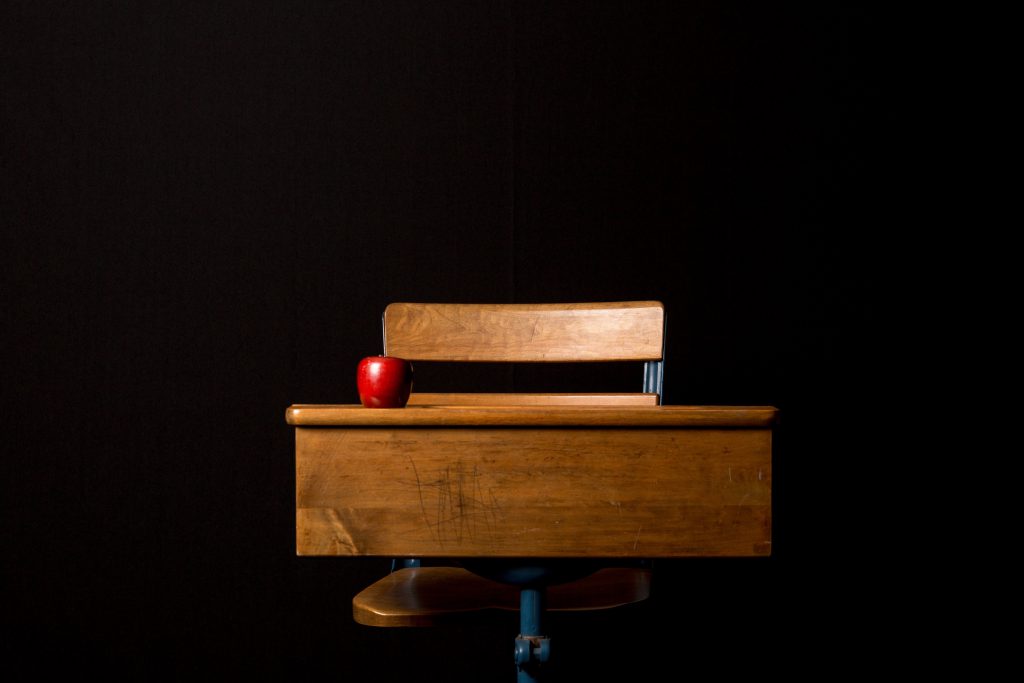Why competency-based learning matters, now more than ever.
What kind of learning should happen here?
It’s a deceptively simple question, one that gets to the heart of why schools and other educational organizations exist. It’s also an increasingly important question as traditional modes of teaching and learning face scrutiny from a world demanding new ways of thinking and operating.
It’s why GOA is proud to be both a member and professional learning partner of the Mastery Transcript Consortium (MTC), an organization dedicated to reimagining the high school transcript to better represent and inspire deeper student learning. In the coming months, GOA and MTC will create in-person workshops and online learning spaces for academic leaders. The focus of the work is to take a networked, collaborative approach to understanding the ideas, resources, and tools we need to assess students’ mastery of relevant skills.
At GOA, we made the decision more than a year ago to move our 50 student courses and 75 faculty towards competency-based learning (CBL), a system that focuses on student mastery of skills and prioritizes flexibility in the shape and timing of assessments. Our ongoing work in this transition has been illuminating, challenging, and, above all, rewarding: the more we invest in designing competency-based learning experiences, the more we realize how well it serves our students and supports our mission of preparing them for a globally networked world.
Why is that? Because CBL mirrors how students will learn, work, and succeed in the world outside of school: it prioritizes agency, encourages adaptability, and reflects the professional cultures and expectations students are most likely to encounter in the future.
The pedagogy of CBL isn’t new. In fact, the concept is grounded in the centuries-old apprenticeship model. The proliferation of powerful, accessible technology; new and more research on learning, the brain, and efficacy; and a global society and economy that favor those who demonstrate the ability to apply, adapt, and create, make adoption of CBL both more important and more feasible than ever.
We’ll be sharing a series of posts about CBL, how to do it, and what it looks like. Let’s start with three core principles that guide GOA’s approach.
CBL focuses on process, not product.
The critical first step of implementing CBL is the development of well-articulated, student-facing competencies (skills students should be developing) and learning outcomes (the evidence of development of those skills). In order for students to develop the independent learning skills and intrinsic motivation necessary to succeed in CBL, they need a clear understanding of what they’re working for and towards. This process is very similar to the Understanding by Design (UBD) framework, and just like in UBD, the focus of CBL is on transfer of learning from school to other settings.
These competencies and outcomes are the foundation on which instruction is built: they are a shared language for feedback, a litmus test for the validity of assessments, and — most importantly — a way for students to check their own understanding and progress. Feedback in CBL is mostly formative, and students have the time and space to act on it, revisiting assessments and concepts in order to incorporate feedback and demonstrate mastery.
At GOA, we’ve developed six core competencies and dozens of associated learning outcomes, and we ask our faculty, in collaboration with our instructional design team, to generate their own course competencies and outcomes to ensure critical skills specific to a class or discipline are recognized. This work can be difficult — as educators we sometimes take a “we know it when we see it” approach to learning — but it is essential to developing a transparent learning environment.
I love this video as an example of process-focused teaching and learning in action:
CBL expands the definition of mastery beyond content knowledge.
The skills our students need to succeed in the world transcend discipline. Teachers doing the work of articulating competencies and outcomes are discovering a more expansive, more inclusive vision for success, incorporating elements of social-emotional learning, executive functioning skills, and discipline-agnostic work like communication and reflection. In other words, they see mastery as broader than content knowledge. This more nuanced approach unleashes authenticity and creativity in assessment design, ways for students to demonstrate learning that incorporate more real-world experiences, more flexible pacing, and more student ownership.
CBL empowers students to take ownership of the learning process.
Above is a video message from Sultana Qureshi, a graduate of Jakarta Intercultural School, talking about her experience designing a project for GOA’s Catalyst Conference. This online conference, where half of GOA’s second semester students ack as presenters, asks students to plan and design a project to spark change in their local communities. While passion drives student success, it is their ability to lead their own learning that is most inspiring, and a hallmark of CBL. After years of working with students in online and brick-and-mortar environments, GOA faculty have identified responsibility, independence, and flexibility as key skills that lead to successful learning. Frequent work and coaching on reflection is necessary at the beginning of this process so students can develop the intrinsic motivation to practice, reflect, and make adjustments, much as they do in sports, music, and other lifelong pursuits. The ultimate goal is for students to be able to articulate and set their own goals; to understand and communicate why they’re at school, what they want to gain from it, and how they’ll get there; in short, they locate and use their intrinsic motivation to direct both what they want to learn and the pace at which they’ll learn it.
An essential thing to remember: no matter where you are in thinking about or implementing competency-based learning, chances are it’s already happening at your school and in your community. Find great examples, whether they’re in your classrooms, on your sports fields, in your art studios, or at a fellow school or organization. Share, discuss, and scale the best learning you can find. Most importantly, engage students in this work: interview them, collect their feedback, and observe their work. A core tenet of competency-based learning is that it begins and ends with student engagement in the learning process, so their voices matter now more than ever.
Global Online Academy (GOA) reimagines learning to enable students and teachers to thrive in a globally networked society. Professional learning opportunities are open to any educator. To sign up or to learn more, see our Professional Learning Opportunities for Educators or email hello@GlobalOnlineAcademy.org with the subject title “Professional Learning.” Follow us on Twitter@GOALearning. To stay up to date on GOA learning opportunities, sign up for our newsletterhere.

